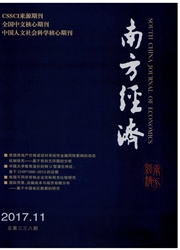

 中文摘要:
中文摘要:
本文通过对货币供给方程的计量分析将预期到的和未预期到的货币冲击进行分离和估计,将货币冲击分解为预期到的货币冲击和未预期到的货币冲击,在此基础上再将未预期到的货币冲击分解为正向冲击和负向冲击;建立了以各种非对称货币冲击为转移变量的平滑转移自回归模型,对货币政策的非对称性效应进行了检验,分析了不同类型的货币冲击对产出增长的非线性影响。本文发现预期到的m1,冲击和非预期到的m1冲击都对经济增长具有显著的非线性作用,预期到的m1冲击的滞后三期影响最为显著,而正向非预期到的m,冲击的滞后一期影响显著。本文认为货币政策要有预见性,建议根据货币冲击的滞后效果在经济周期的不同阶段和货币冲击的不同类型、区间和强度粟取非对称性货币政筻.把握政策的调节力度.
 英文摘要:
英文摘要:
In this paper, expected and unexpected monetary shocks, and positive and negative unexpected monetary shocks are defined and estimated using econometric models of money supply and related Chinese macroeconomic data, and then a smooth transition auto - regression model in which transition variables are exogenous is obtained in order to test the effects of asymmetric of monetary shocks on economic growth. It is shown that both expected and unexpected monetary shocks of m1 have nonlinear influence on the growth rate of GDP. According to the lagged effects of monetary policy, the paper suggests that forward looking monetary policy is needed and monetary operations should have different strength in economic cyclical upturn and downturn.
 同期刊论文项目
同期刊论文项目
 同项目期刊论文
同项目期刊论文
 期刊信息
期刊信息
